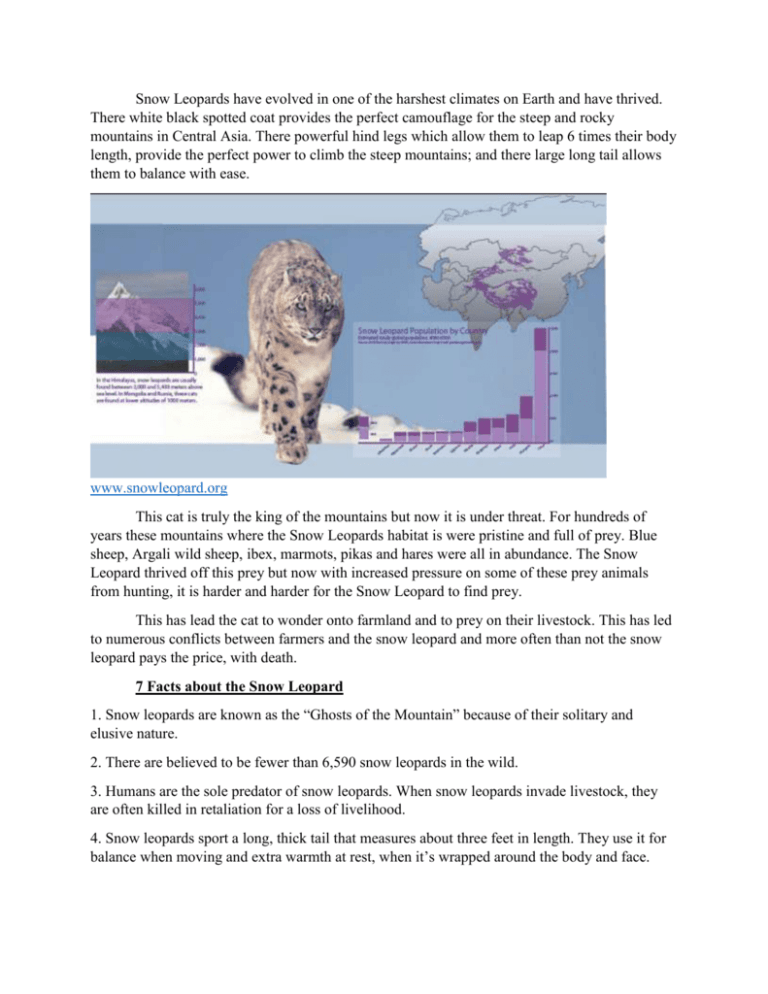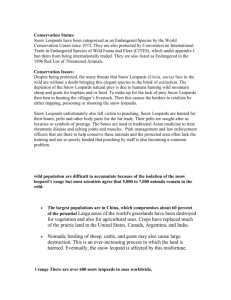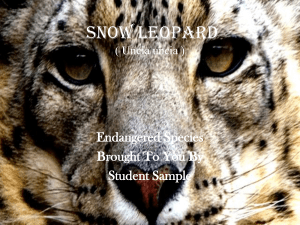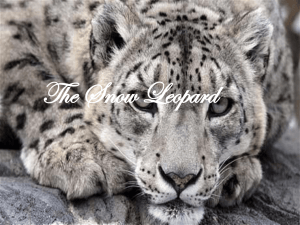Snow Leopards - WordPress.com
advertisement

Snow Leopards have evolved in one of the harshest climates on Earth and have thrived. There white black spotted coat provides the perfect camouflage for the steep and rocky mountains in Central Asia. There powerful hind legs which allow them to leap 6 times their body length, provide the perfect power to climb the steep mountains; and there large long tail allows them to balance with ease. www.snowleopard.org This cat is truly the king of the mountains but now it is under threat. For hundreds of years these mountains where the Snow Leopards habitat is were pristine and full of prey. Blue sheep, Argali wild sheep, ibex, marmots, pikas and hares were all in abundance. The Snow Leopard thrived off this prey but now with increased pressure on some of these prey animals from hunting, it is harder and harder for the Snow Leopard to find prey. This has lead the cat to wonder onto farmland and to prey on their livestock. This has led to numerous conflicts between farmers and the snow leopard and more often than not the snow leopard pays the price, with death. 7 Facts about the Snow Leopard 1. Snow leopards are known as the “Ghosts of the Mountain” because of their solitary and elusive nature. 2. There are believed to be fewer than 6,590 snow leopards in the wild. 3. Humans are the sole predator of snow leopards. When snow leopards invade livestock, they are often killed in retaliation for a loss of livelihood. 4. Snow leopards sport a long, thick tail that measures about three feet in length. They use it for balance when moving and extra warmth at rest, when it’s wrapped around the body and face. www.thewildlifeofindia.com 5. The habitat of the snow leopard continues to decline as increased grazing and human settlements fragment the historic range of the species. 6. Climate change will likely destroy nearly 30 percent of snow leopard habitat in the mountain ranges of Central Asia, stretching from northwestern China to Tibet and the Himalayas. 7. Solid spots cover the snow leopard’s head, neck and lower limbs, while rosettes—large rings enclosing smaller spots—cover the rest of the body. Threats Regulatory killings have become a major threat to the snow leopards. With livestock, such as sheep, goats, horses, and yak calves being hunted by snow leopards, farmers and communities have targeted the cat and in many cases kill them. Their prey which is also somewhat hunted has put increased pressure on the species. Habitat fragmentation is also a major threat. With increased deforestation and human development the once vast range of the snow leopard is now being fragmented. Why should we Care? Snow leopards are the apex predator in their habitat and the health of their species is a reflection of the health of the environment and habitat they live in. If they are on the decline then soon enough there habitat will follow. Which in the case would be the Himalaya Mountains, the tallest and largest mountain range in Asia. www.mountainprofessor.com Information about the Snow Leopard and how you can help https://www.youtube.com/watch?v=qAAqQqoNecM











